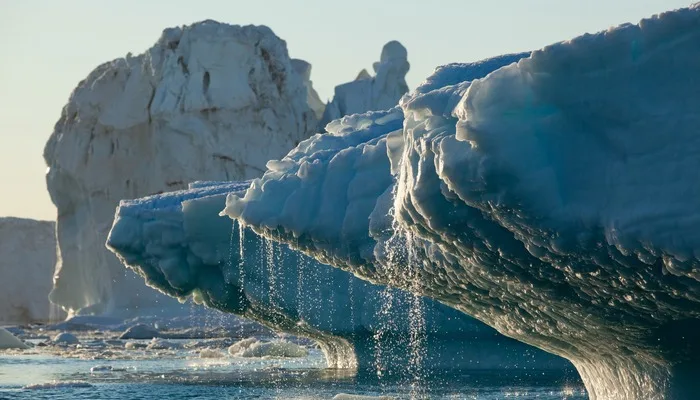Greenland’s vast ice sheet melted 17 times faster than its historical average during a powerful May heatwave, a new report from the World Weather Attribution (WWA) scientific network revealed on Wednesday. The intense warming also affected Iceland, setting records and raising global concerns.
The WWA attributed this dramatic increase in melting to human-driven climate change. “Without climate change, this would have been impossible,” said Friederike Otto, associate professor in climate science at Imperial College London and co-author of the report. Otto warned that the accelerated ice melt in Greenland would significantly contribute to rising sea levels worldwide.
The WWA’s preliminary analysis confirmed that the Greenland ice sheet’s contribution to global sea level rise during the heatwave was far higher than it would have been under normal climate conditions.
Iceland Records Unprecedented Heat
While Greenland saw severe ice loss, Iceland also endured extreme heat. On May 15, temperatures exceeded 26°C (79°F) — an unprecedented level for that time of year in the subarctic island. The WWA reported that May temperatures in Iceland were more than 13°C higher than the 1991–2020 average.
According to the Icelandic Meteorological Office, 94% of the country’s weather stations recorded record-breaking temperatures. The eastern region of Greenland also experienced peak temperatures approximately 3.9°C warmer than preindustrial levels.
“While a 20°C heatwave may not seem extreme globally, it is a very big deal in the Arctic,” Otto explained. “It disrupts ecosystems, threatens infrastructure, and affects the entire planet through sea level rise.”
Read: Glacier Collapse in Switzerland Highlights Climate Risks
Climate Change Threatens Livelihoods and Infrastructure
The rapid warming in the Arctic is not just an environmental concern — it also threatens the lives and livelihoods of indigenous communities in Greenland. Many depend on the ice for hunting and travel, and as the ice melts earlier and more quickly, traditional ways of life become unsustainable.
Infrastructure in both Greenland and Iceland is also vulnerable. Designed for cold conditions, roads, homes, and public facilities are at risk of damage due to melting ice, increased flooding, and shifting foundations. “In Greenland and Iceland, infrastructure is built for cold weather. During a heatwave, ice melt can damage roads and essential systems,” the WWA report warned.
According to a 2022 study published in Nature, the Arctic has been warming four times faster than the global average since 1979. WWA scientists now estimate that heatwaves like the one in May could recur every 100 years — and may become more frequent if greenhouse gas emissions continue to rise.
As the Arctic experiences record-breaking temperatures and melting rates, scientists are urging immediate climate action. “These events should be seen as a wake-up call,” Otto said. “The consequences of inaction will not only reshape the Arctic but have ripple effects across the entire globe.”
Follow us on Facebook and Instagram
